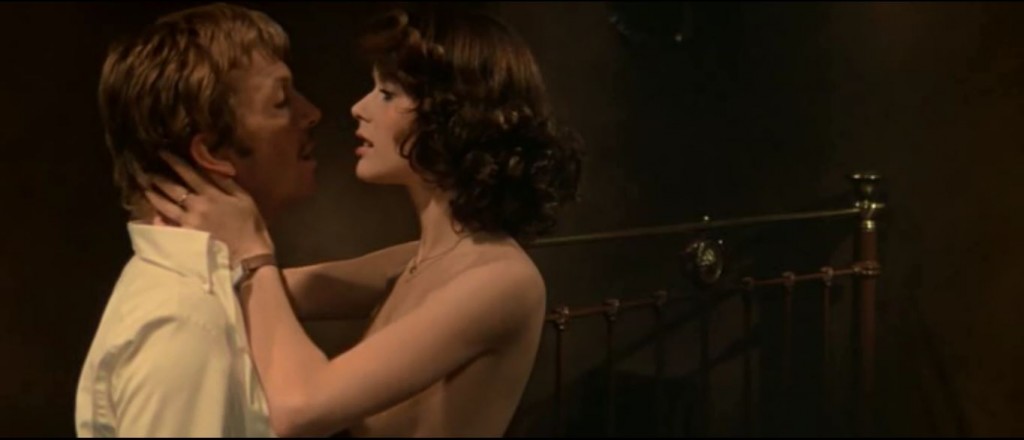Nudity and sex in film both have a very long history, almost as long as that of film itself. Artists have used the two time and time again to express creative freedom in their works and tell their stories in line with their vision. It has also been used as a device to push the boundaries of film-making and to see how far it could go in terms of what was allowed to be portrayed on screen. In 1968, after the removal of the (very controversial) Hays Code that restricted films from showing certain content, there was a substantial increase in pictures with sexual and non-sexual nude scenes, both within the United States of America and internationally. Skin-flicks, sexploitation movies, and soft-core pictures started to attract viewers in drive-in theaters as well as grindhouse screenings. As nudity became commonplace in cinema, a couple of these films even received wide releases from major studios.
Columbia Pictures released its first X rated movie in the form of ‘Emmanuelle’ (1974), a French soft-core flick that went on to become very successful commercially (an all time box office hit in France that year), but received mostly negative reviews from critics. One of the film’s biggest supporters was Roger Ebert (the film critic) though, who gave it a 3 out of 4 star rating and called it a “silly, classy, enjoyable erotic film”. That’s pretty much all it was, and part of the reason it got so popular was its smart promotional tools. I mean, who wouldn’t fall for a film that bared the tagline “X was never like this”? The film had a somniferous score composed by Pierre Bachelet that was called “sophisticated and more banal than your average stroke-film soundtrack”. I’d take it further and call the theme song to the film one of the best musical productions in history, because even though I haven’t ever looked for the meaning of the lyrics, I understand the message perfectly from just the way it sounds.
As most successful films give birth to a sequel, ‘Emmanuelle’ followed the same route. It was titled ‘Emmanuelle: the Joys of a Woman’ (1975) or ‘Emmanuelle II’ for short. Once again starring the beautiful Dutch model and actress Sylvia Kristel as the title character, the film fared well at the box office like its predecessor did. It was, yet again, critically panned, and not even Roger Ebert stood by this one. In his one star review, he was of the opinion that the film had no point and that it was boring. I have seen both pictures, and although I can understand what might have evoked such a reaction from him as well as the many others who didn’t enjoy it back in 1975, I strongly disagree with them to such an extent that not only do I think of it as the best movie in the ‘Emmanuelle’ series (that contained 7 features in total), I consider it to be the greatest film ever made in the ‘erotica’ genre.
‘Emmanuelle’ and ‘Emmanuelle II’ are connected to each other by a very thin string, in that you don’t need to watch one to get the next. Both films toy with the themes of love, passion, and sex. In ‘the Joys of a Woman’, our lead character takes a ship to Bangkok in order to meet with her husband, and the story follows the both of them as they take part in various sexual encounters – not necessarily with each other. They are in an ‘open marriage’, a term that is applied quite literally and exploited considerably well by most of the characters involved. The sheer confidence of this film makes it very sure (and kinda proud) of what it’s showing us. I felt, at least for a moment, that marriages of such an outrageous and unrealistic nature could exist. The concepts presented here don’t feel stupid due to the film’s integrity in and surety of its universe, and I find that very appreciable.
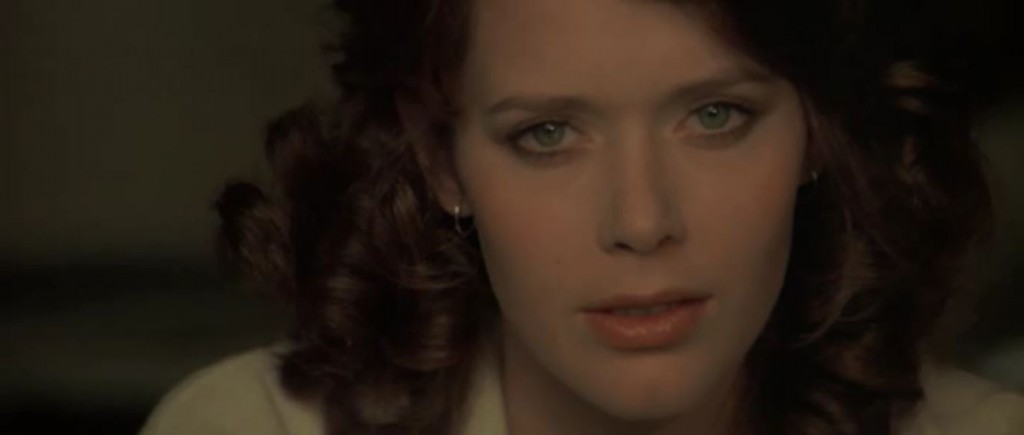
On the whole, ‘Emmanuelle II’ works like a piece of art, being subject to interpretation and all. Starting from Sylvia Kristel’s beautiful eyes shown in medium close ups of her face, so seductive, with some of the greatest music put to any film ever; (thanks to Francis Lai, the master who composed the acclaimed scores to ‘A Man and A Woman (1966)’, ‘Love Story (1970)’, and ‘Bilitis (1977)’) all the way up to the times it uses silence to bring out a sense of passion, the movie is able to distinguish itself from all other pictures that follow similar themes. The only film that I think is even remotely comparable to the aesthetic qualities of this one (in this specific genre) is ‘Histoire D’o’, which coincidentally came out in the same year. Viewers are bound to take note of the meticulous use of the colors blue and red in ‘Emmanuelle II’ – red to depict sexual activities taking place in the movie’s perception of reality, and blue to envelope the imaginary. Certainly this movie had a lot of thinking going into it, due to which it bursts with ideas and technical innovations throughout its runtime.
Before I get into the rest of the good stuff, I have to agree to the fact that it has terrible grade-z writing backing it up. The dialogues are very awkward and delivered at wrong times. Gladly, spoken words are minimal, and honestly, do you think the filmmakers really cared about the quality of the script when they conceived this?
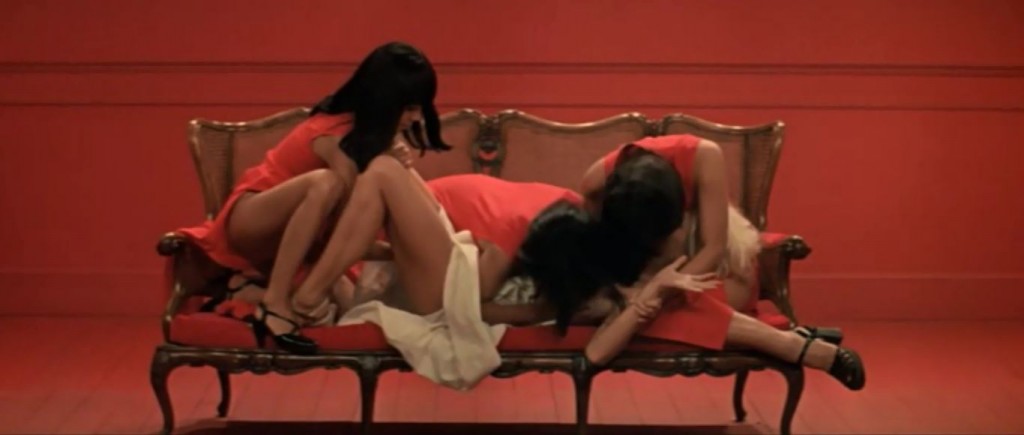
New characters are introduced within the first act like a strange young man who lodges in the couple’s house named Christopher, and a friend (who plays a significant role, of which you shall soon read) Emmanuelle and her husband Jean pick up named Anne Marie — a virgin, whom the two try “helping” out. Speaking of new characters, there is a great cameo in this movie by Laura Gemser, the Indonesian actress who would later go on to play ‘Emanuelle’ (same as this one, minus an ‘m’) in the African American spin off films based on this series. Here, she plays a masseuse.
It is important to understand that ‘Emmanuelle II’ lacks a basic, coherent plot. It starts off with Kristel’s character getting into the aforementioned ship, in a scene so beautifully colored with a background score so wonderfully composed. Two of her early meetings take place here: one with the ship’s captain who comes onto her but is rejected, and the other with a woman who comes onto her as well, but is willingly accepted due to a sexual fantasy (which could have been real, it is never confirmed) of her’s that she describes in detail, turning Emmanuelle on. Later, at home, she sneaks up on her husband when he is in the middle of receiving a rather suggestive massage from their Thai maid, and the two embrace. After a few scenes, wherein we first meet Christopher and take a short tour of the house, the couple decide to make love in the privacy of their bedroom.
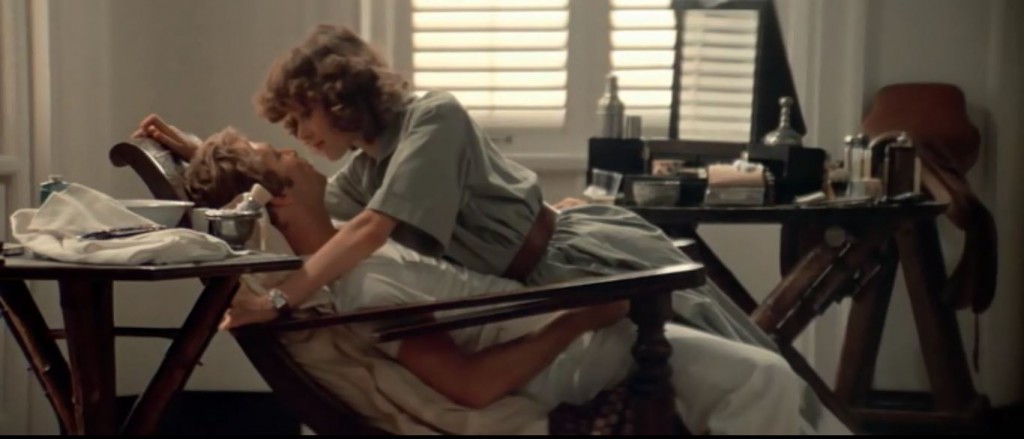
I believe this picture can be divided into four segments based on the major love scene that takes place within each one. The first scene happens about 18 minutes into the film, and is one that could be studied in film schools – it’s borderline perfect. Commencing with Emmanuelle turning towards her husband, in close up, and nonchalantly but steadily uttering the words “f**k me”, the camera gracefully slides back and allows the lovers to come closer together. They do not wish to rush things, and so a magnificent follow-up scene appears a couple minutes later where the leading lady slowly strips in frame (with lovely, lovely composition) while Jean does the same off camera, after which we are presented with the copulation, every bit of which is as classy as one could imagine. I could only describe the entire moment as “exquisite”, for lack of a better word. Lai’s dreamy music here is like the cherry on top of an already delicious sundae.
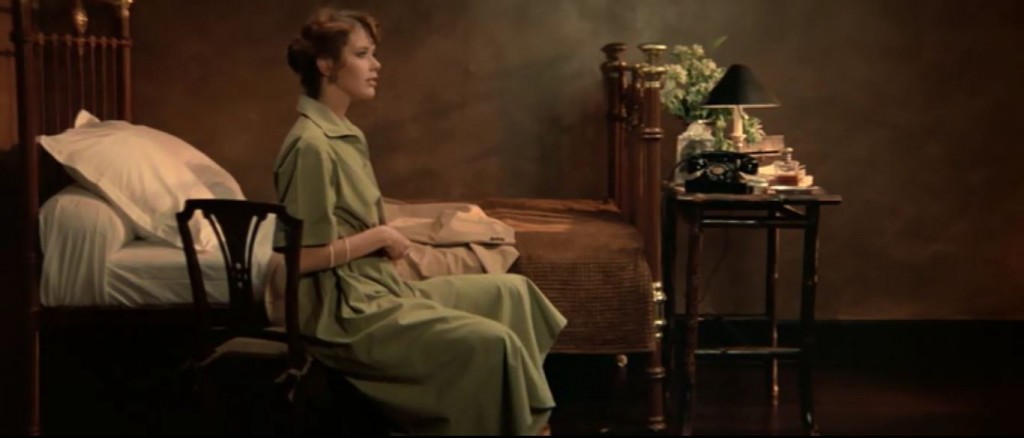
The next scene is one that takes place about halfway into the film, when Emmanuelle decides to get an acupuncture at a traditional clinic along with Christopher, who ends up just watching her go through the whole thing. She’s naked, of course, but this particular lovemaking session (with Chris playing the partner) takes place within her mind, and hence there’s a surreal touch to it. The sequence is cut along with scenes of her back in the real world with pins and needles placed on different parts of her body. This entire section is particularly slow and has a “throbbing” feel to it, which makes it quite… hypnotic. It’s a beautiful, sensual, and memorable moment, and with another powerful piece by Lai, it feels all the more majestic.
The third segment (occurring three-fourths into the movie) is divided on the basis of the bit where the couple (along with Anne Marie) spontaneously decide to go to a spa due to the simple reason of the weather being “too hot”.There’s something about the shimmering bodies of our characters in this alluring scene as they are assigned a masseuse each who are all just as unclothed as them, combined with Francis Lai’s breathtaking main piece, and the golden-ish setting that feels so professionally done, as well as very French in its execution. The three leads also take part in a subtle choreography of eyelids when they look at each other, their eyes brightening the screen, as wonderful shots take up each frame.
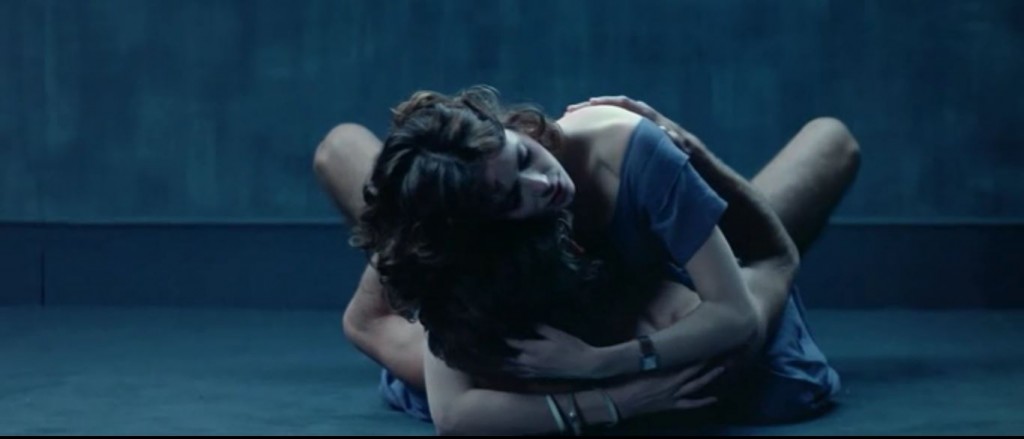
I hope the main intentions of the picture are clear by this line. There is really nothing to the story other than it being a means to explore different levels of sexual freedom. It isn’t just sex scenes though – there is an attempt to develop the characters and actually have a couple twists to keep the viewers interested. The plot is basically Jean and Emmanuelle trying to satisfy Anne Marie’s quench for love by getting her to take part in a threesome, and this isn’t even the main focus. Everything the picture tries to do is in either one way or the other related to sex. From a technical standpoint, the cinematography and composition are just perfect, aiding the themes so well. The depth of field and lighting are both used in ample quantity to convey the required emotions at certain points of time. In my opinion, ‘Emmanuelle II’ is one of the smartest films that carried out this form of picturesque camerawork in its time.
The director of the first ‘Emmanuelle’ (and ‘Histoire D’o’ as well) wasn’t present for this film, but his absence, I felt, worked for the betterment of this picture. The style of the first film is nowhere close to the greatness of this one. All that being said, the movie is incredibly racist, especially aimed at the residents of Bangkok. It’s subtle, but also quite astounding how they got all that into the film. Contrasting this fact, though, the film does respect the culture of Thailand, glorifying its dances and customs.
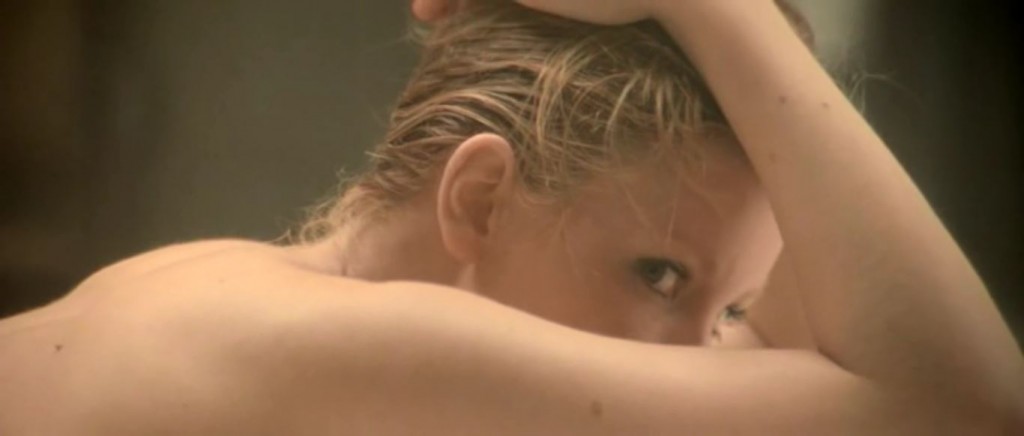
The final segment of the picture is when the couple succeed in giving their acquaintance what she asked for. In a lavish and long scene, all three characters get together, and Jean takes charge of initiating the scene with his accidental foreplay. The ultimate beauty of this film, though, is when it ends. Sylvia Kristel breaks the fourth wall. She looks right at us, as Francis Lai’s “L’amour D’aimer” plays softly in the background, a song that could very well be the best ever written in film history. Her look is mysterious – what does she wish to tell us? It’s tensely mystifying, and you have to see it to get it, because at that moment the world suddenly stops, and everything is static.
What else can I say about the film that may very well be one of the greatest artistic endeavors in all of cinema? It’s grossly overlooked, for one. Some films don’t work like others. They don’t need a beginning, middle, and end. No conflicts, no solutions, nothing. It may feel like the film has no point in existing, like Ebert mentioned in his review, but in my eyes, that is exactly what the filmmakers intended to do. It is a celebration of art, and what’s more, it is a celebration of all that is contained within the word ‘erotica’. ‘Emmanuelle II’ is the apex of everything good about the 1970s perspective on intercourse and liberation, and is absolutely perfect in that sense. Sex was never like this.

